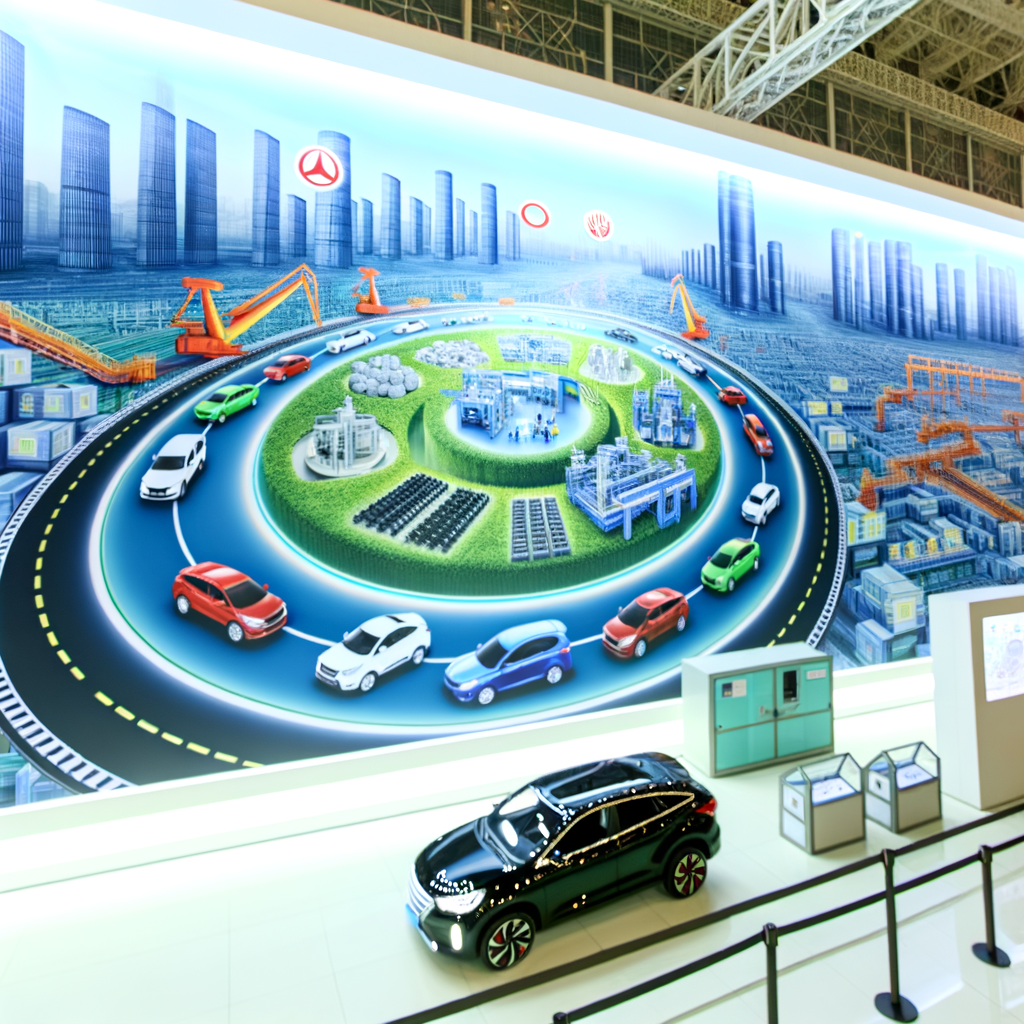China, the world’s Largest Automotive Market, is at the forefront of the shift towards Electric Vehicles (EVs) and New Energy Vehicles (NEVs), fueled by a Growing Economy, Urbanization, and increasing Environmental Concerns. Both Domestic Car Brands and Foreign Automakers are vying for dominance, leveraging Technological Advancements and Government Incentives. The competition is heightened by the complex Regulatory Landscape, with companies forming Strategic Partnerships and Joint Ventures to align with Consumer Preferences and navigate Market Competition effectively. This dynamic battleground underscores the critical role of innovation in EVs and NEVs, driven by the urgent push towards electrification.
In the sprawling expanse of the global automotive landscape, the China automotive market stands as the colossus—unmatched in its scale and dynamism, making it the largest automotive market in the world. As the epicenter of both production and sales, its growth trajectory is fueled by a burgeoning middle class, rapid urbanization, and a growing economy that collectively drive an insatiable demand for vehicles. This vibrant market is a battleground for both top domestic car brands and foreign automakers, each vying for a significant share through strategic partnerships and a keen understanding of the complex regulatory landscape.
The push towards Electric Vehicles (EVs) and New Energy Vehicles (NEVs) is reshaping the market, spurred by government incentives and mounting environmental concerns. This green revolution marks a pivotal shift in consumer preferences and positions China as a critical player in the global transition towards sustainable transportation. As foreign automakers form joint ventures with local companies to navigate the intricacies of the market, the importance of technological advancements and a deep understanding of consumer needs cannot be overstated.
Our exploration delves into the heart of China’s automotive sector, unpacking the elements that make it a hotbed of market competition and innovation. From “Navigating the Landscape” to “The Regulatory Roadmap,” and from “Electric Dreams” to “The Road Ahead,” we offer an in-depth analysis of the forces shaping the future of this lucrative market. As environmental concerns drive the surge of electric and new energy vehicles, understanding the strategic partnerships, government incentives, and the evolving regulatory landscape becomes crucial for anyone looking to thrive in this competitive arena.
Join us as we journey through the intricacies of China’s automotive market, a realm where economic growth, urbanization, and a commitment to sustainability are fueling a revolution that is set to redefine the global automotive industry.
1. “Navigating the Landscape: How Top Foreign Automakers and Domestic Brands Compete in the World’s Largest Automotive Market”

In the sphere of the global automotive industry, China stands as a towering giant, boasting the title of the Largest Automotive Market due to its unrivaled production and sales figures. This status is propelled by a confluence of factors including a Growing Economy, rapid Urbanization, and an expanding middle class with a voracious appetite for both Domestic Car Brands and offerings from Foreign Automakers. As the market evolves, the competition heats up, with Electric Vehicles (EVs) and New Energy Vehicles (NEVs) taking center stage, driven by both Government Incentives and mounting Environmental Concerns.
Navigating the complex Regulatory Landscape of China’s automotive sector requires finesse and strategic acumen. Foreign Automakers have often opted for forming Joint Ventures with local Chinese companies, a move that allows them a crucial foothold in the vast consumer base while adhering to the intricate web of local regulations. These partnerships have become a cornerstone strategy for accessing the burgeoning market, blending international technological advancements with local market insight.
On the other hand, Domestic Car Brands are not standing by idly. Bolstered by an intimate understanding of Consumer Preferences and the regulatory environment, they have embarked on aggressive strategies to innovate and expand. The push towards EVs and NEVs has seen domestic brands leapfrog into prominence, supported by government policies favoring the transition to greener alternatives.
The battle for dominance in the Chinese automotive market is a dynamic one, influenced heavily by Technological Advancements. Both foreign and domestic players are in a constant race to outdo each other in innovation, offering smarter, cleaner, and more connected vehicles. This competition is further intensified by the Chinese government’s clear vision for a future dominated by EVs and NEVs, making technological superiority not just an advantage, but a necessity.
Strategic Partnerships between foreign and domestic companies have emerged as a vital tool in this highly competitive environment. These alliances allow for a sharing of resources, from R&D to marketing strategies, ensuring that both parties can leverage their strengths to navigate Market Competition successfully.
In conclusion, the Largest Automotive Market in the world is a complex, competitive, and rapidly changing landscape. Success in this market is not guaranteed by size or past achievements alone but requires a deep understanding of the Regulatory Landscape, Consumer Preferences, and the ability to form Strategic Partnerships. As Environmental Concerns continue to shape government policies and consumer choices, the race towards electrification in the automotive sector is becoming increasingly central, making innovation in EVs and NEVs a top priority for both Domestic Car Brands and Foreign Automakers alike.
In conclusion, the China automotive market stands as the largest in the world, driven by a growing economy, rapid urbanization, and an expanding middle class. This vibrant market is at the forefront of adopting electric vehicles (EVs) and new energy vehicles (NEVs), spurred by environmental concerns and robust government incentives. Both domestic car brands and top foreign automakers are vying for a share of this lucrative market, navigating through the complex regulatory landscape with strategic partnerships and joint ventures. The competition is fierce, influenced by consumer preferences, technological advancements, and the dynamic nature of government policies.
To thrive in the China automotive market, understanding the nuances of market competition, consumer behavior, and the regulatory framework is crucial. The emphasis on EVs and NEVs highlights the market’s shift towards sustainability, presenting opportunities and challenges for both domestic and foreign players. As these trends continue to evolve, the market’s competitive landscape will be shaped by those who can leverage technological advancements, align with consumer preferences, and navigate the regulatory environment effectively.
The future of the automotive industry in China looks promising, with the potential for significant growth and innovation. For companies looking to succeed in this largest automotive market, building strong joint ventures, staying ahead of technological trends, and understanding the unique demands of the Chinese consumer will be key. As the market continues to grow and evolve, the strategic moves made by automakers today will determine their position in this dynamic and competitive environment for years to come.







